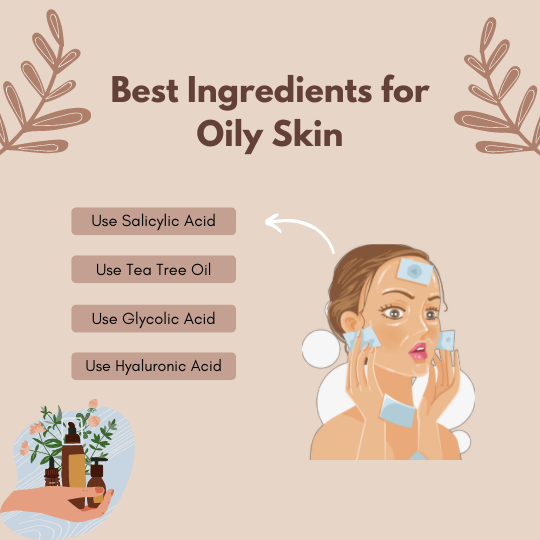Skincare can be a daunting subject, especially regarding the right ingredients. But don’t worry, I’m here to help!
In this article, we’ll explore the benefits of combining two popular skincare ingredients: hyaluronic acid and salicylic acid. We’ll look at why they work well together, who should use them, how often they should be used, and more.
By the end of this article, you’ll better understand how these two ingredients can help improve your skin – all while keeping it hydrated and irritation-free.
Let’s get started!
What Is Hyaluronic Acid?
Hydrate and nourish your skin with hyaluronic acid! It’s a powerful humectant can hold up to 1000x its weight in water, making it perfect for keeping the skin hydrated. It also stimulates collagen production, helping to reduce fine lines and wrinkles.
When used in combination with other skincare ingredients such as Vitamin C, glycolic acid, lactic acid, or betahydroxy acids (BHA), hyaluronic acid can be even more effective at treating common skin concerns such as dryness, uneven texture, and acne.
Use a product containing hyaluronic acid after cleansing and moisturizing for optimal results. You can also mix it with water to maximize its potential. Whether you have normal, dry or sensitive skin types, this ingredient is suitable for all – just remember to start slowly and gradually increase usage if using it with other products.
Benefits of Hyaluronic Acid
Let your skin soak up the deep hydration of hyaluronic acid and feel the difference it makes! Hyaluronic acid (HA) is a powerful humectant, naturally found in our bodies, that retains moisture effectively in the skin.
It’s a great addition to any skincare routine because it helps to smooth out wrinkles, reduce redness, diminish fine lines and wrinkles, and keep the skin’s protective barrier strong. Here are some of the benefits of using Hyaluronic acid in your skincare routine:
- Helps retain moisture in the skin and improves texture
- Can be used with all skin types
- Smooths out wrinkles and helps skin retain moisture deep below its barrier
- Stimulates collagen production for smoother and plumper skin
- Protects from environmental stressors like free radicals
- Delivers moisturizing benefits without causing irritation
What Type of Skin Is Best For Hyaluronic Acid?
It’s an incredibly versatile skincare ingredient that can benefit all skin types, from oily to dry.
For those with oily skin, hyaluronic acid helps keep skin hydrated and balanced without adding extra oil or a greasy feeling. Hyaluronic acid is often combined with beta hydroxy acids like salicylic acid, active ingredients for exfoliating and reducing sebum production.
Adding a hyaluronic acid serum into your skincare routine before applying salicylic acid will help protect your skin barrier from drying out due to this exfoliant while providing additional hydration. This combination of ingredients can help reduce breakouts and blemishes while improving overall complexion by smoothing wrinkles and restoring balance.
Not only will you reap the benefits of these two powerhouse ingredients, but you’ll also experience softer and healthier-looking skin!
How Often Should You Use Hyaluronic Acid?
For best results, use hyaluronic acid twice daily. Applying it to damp skin, followed by a moisturizer, will provide maximum hydration. Salicylic acid should be used 1-3 times weekly on dry skin for deeper exfoliation.

What Is salicylic acid?
Salicylic acid is a powerful chemical exfoliant that can penetrate and unclog pores, control oil production, reduce inflammation, and increase collagen production – hyaluronic acid helps keep the skin hydrated.
Skincare products containing both ingredients are widely available and can have great results when used together.
Salicylic acid is an effective treatment for acne-prone skin as it penetrates deep into the pores to unclog them. It also works well with alpha hydroxy acids to improve skin texture and reduce fine lines and wrinkles.
Benzoyl peroxide does not work as well as salicylic acid in these areas, so it’s best avoided when using a salicylic acid serum.
Benefits of salicylic acid
Salicylic acid is an effective acne treatment, as its exfoliating properties can penetrate and unclog pores to reduce inflammation and increase collagen production. It’s derived from the bark of willow trees and can be found in many skincare products, such as cleansers, toners, serums, and moisturizers.
Here are some key benefits of using salicylic acid:
- It can penetrate deep into pores to unclog them
- It reduces inflammation caused by acne
- It helps regulate oil production to prevent future breakouts
- It combines well with other types of acids like hyaluronic acid for maximum effectiveness
Acetylsalicylic acid (aspirin) also contains salicylic acid, which can reduce the redness and swelling of pimples when applied directly to the skin. By combining salicylic acid with a combination of hyaluronic acid, you can effectively manage your acne without drying out your skin or causing irritation.
What Type of Skin Is Best For salicylic acid?
Combining hyaluronic and salicylic acid can help manage your acne without compromising hydration if you’re worried about irritation or dryness. Salicylic acid is a type of beta hydroxy acid known for its anti-inflammatory properties. It penetrates the pores to unclog them and reduces the appearance of blemishes, making it ideal for those with acne-prone skin.
Hyaluronic acid helps to retain moisture in the skin and combat any potential dryness from using salicylic acid. This skincare ingredient also smooths out wrinkles and boosts elasticity in the skin, making it great for sensitive skin. You can get maximum results by combining these two ingredients while avoiding irritation or over-drying your complexion.

How Often Should You Use salicylic acid?
With its anti-inflammatory and pore-clearing properties, salicylic acid can be great for acne-prone skin. However, using it in moderation is important to avoid over-drying or irritating your complexion. Depending on what type of product you’re using, how often you should use salicylic acid could vary:
- If you’re using salicylic acid face wash or toner, you can use those twice daily without issue.
- If the product contains higher concentrations of salicylic acid (like 10%), it’s best to use it only 1-2 times weekly.
- You can also look for products that contain hyaluronic acid and salicylic acid, which will help reduce any irritation caused by the salicylic acid while still providing pore-clearing benefits.
- It’s always important to follow up with a moisturizer after using any skin care product containing salicylic acid, as this will help keep your skin hydrated and prevent dryness caused by the acids in the product.
Combining hyaluronic and salicylic acid can be a great way to keep your complexion free from blemishes while avoiding irritation and dryness. Just talk to your doctor or dermatologist before starting any new routine!
Can you use salicylic acid and hyaluronic acid together?
Yes, you can use salicylic acid and hyaluronic acid together! This combination is perfect for those who want to exfoliate and hydrate their skin.
Salicylic acid helps to clear away dead skin cells, while hyaluronic acid helps to lock in moisture. It’s essential to follow the rule of thinnest-to-thickest when applying products, so start with the hyaluronic acid, which should be applied on damp skin, then apply the salicylic acid (which should be used on dry skin), followed by a moisturizer.
In addition to using these two ingredients together, you can add other skincare ingredients such as amino acids, ferulic acid, vitamin B, or azelaic acid.
All of these ingredients work together to help reduce oil production and improve your skin’s overall texture and tone. Be sure to start slowly and build up usage if introducing any new product into your routine – it’s always best practice when dealing with skincare!
What are the potential side effects of using salicylic and hyaluronic acid together?
Combining salicylic and hyaluronic acid can help keep skin hydrated, but starting slowly and gradually increasing usage is essential to avoid irritation.
As salicylic acid has a lower pH than hyaluronic acid, combining them can benefit those with oily skin because it can help balance out oil production. However, it’s best to use both products separately if you have sensitive skin.
Who should use salicylic acid and hyaluronic acid together?
For those with oily skin, combining salicylic and hyaluronic acid can help balance out oil production, but those with sensitive skin should use them separately. Salicylic acid is an excellent choice for oily skin as it helps to unclog pores and reduce inflammation.
Hyaluronic acid will provide the necessary hydration to keep the skin from becoming dry and irritated due to the exfoliating effects of salicylic acid. For those with sensitive skin, using these two ingredients together could be too much for your skin and cause irritation or redness.
In this case, it’s best to apply each ingredient separately: start with hyaluronic acid first, followed by other treatments like dark spot correcting alphahydroxy acids, retinoic acid, or vitamin E. This way, you can avoid any potential irritation and keep your skin’s protective barrier intact while reaping all the benefits of both ingredients.
Can salicylic acid be used with hyaluronic acid and vitamin C?
Yes, you can use salicylic acid with hyaluronic acid and vitamin C. These are all popular ingredients that can be used together to achieve great results for various skin conditions.
Hyaluronic acid is a humectant that helps to hydrate and increase skin elasticity, while salicylic acid is a chemical exfoliant that targets pores and oil production. Vitamin C provides antioxidant properties that can help reduce inflammation and promote collagen production.
It is advisable to use these items in a specific sequence from less dense to more dense for optimal outcomes. Begin with hyaluronic acid (apply it to moist skin), followed by a lighter product such as vitamin C, and end with a thicker product like salicylic acid (apply it to dry skin).
You can find these ingredients in various products, from cleansers and toners to serums and moisturizers.
Conclusion : Can You Use Salicylic Acid With Hyaluronic Acid ?
The answer is yes! These two powerhouse ingredients can actually complement each other in your skincare routine.
Salicylic acid helps exfoliate and clear clogged pores, while hyaluronic acid hydrates and plumps the skin. Together, they can tackle acne and promote a healthier complexion. Just be mindful of proper usage and patch testing to ensure optimal results.

